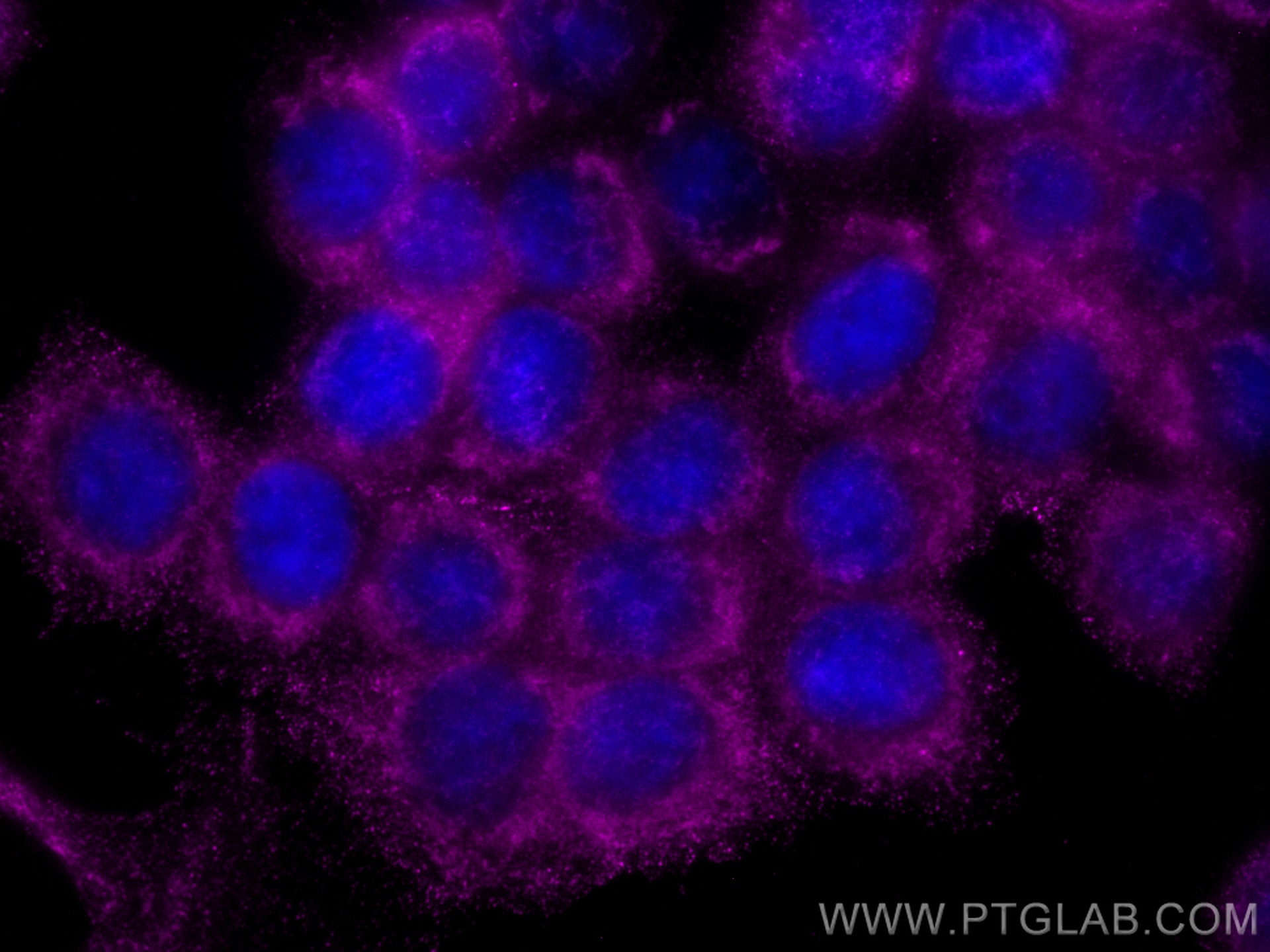Validation Data Gallery
Tested Applications
| Positive IF/ICC detected in | BxPC-3 cells |
Recommended dilution
| Application | Dilution |
|---|---|
| Immunofluorescence (IF)/ICC | IF/ICC : 1:50-1:500 |
| It is recommended that this reagent should be titrated in each testing system to obtain optimal results. | |
| Sample-dependent, Check data in validation data gallery. | |
Product Information
CL647-66847 targets Decorin in IF/ICC applications and shows reactivity with human, pig samples.
| Tested Reactivity | human, pig |
| Host / Isotype | Mouse / IgG1 |
| Class | Monoclonal |
| Type | Antibody |
| Immunogen | Decorin fusion protein Ag6275 相同性解析による交差性が予測される生物種 |
| Full Name | decorin |
| Calculated molecular weight | 359 aa, 40 kDa |
| Observed molecular weight | 40 kDa, 100 kDa |
| GenBank accession number | BC005322 |
| Gene Symbol | Decorin |
| Gene ID (NCBI) | 1634 |
| RRID | AB_3673641 |
| Conjugate | CoraLite® Plus 647 Fluorescent Dye |
| Excitation/Emission maxima wavelengths | 654 nm / 674 nm |
| Form | Liquid |
| Purification Method | Protein A purification |
| UNIPROT ID | P07585 |
| Storage Buffer | PBS with 50% glycerol, 0.05% Proclin300, 0.5% BSA , pH 7.3 |
| Storage Conditions | Store at -20°C. Avoid exposure to light. Stable for one year after shipment. Aliquoting is unnecessary for -20oC storage. |
Background Information
Decorin is a member of the small leucine-rich proteoglycan family of proteins. Decorin interacts with type I collagen fibrils, thereby influencing the kinetics of fibril formation and the distance between adjacent collagen fibrils. Binding of this protein to multiple cell surface receptors mediates its role in tumor suppression, including a stimulatory effect on autophagy and inflammation and an inhibitory effect on angiogenesis and tumorigenesis.
Protocols
| Product Specific Protocols | |
|---|---|
| IF protocol for CL Plus 647 Decorin antibody CL647-66847 | Download protocol |
| Standard Protocols | |
|---|---|
| Click here to view our Standard Protocols |
